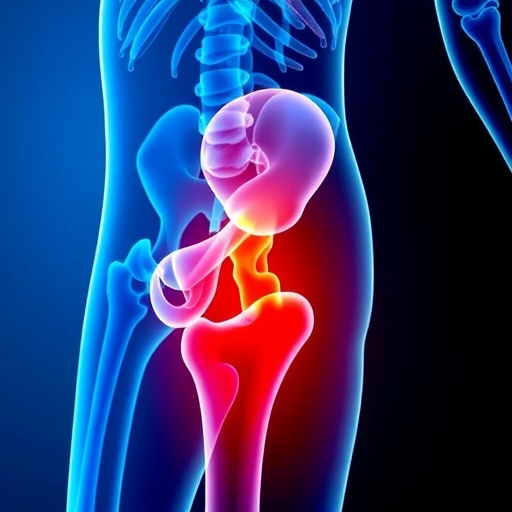In an enlightening study published in the Journal of Medical Biology Engineering, researchers explored the biomechanical outcomes of innovative artificial hip joint designs tailored specifically for elderly patients. The research, conducted by a distinguished team including Chen, H., Zhang, S., and Zhang, Z., sets the stage for significant advancements in the field of orthopedic surgery and implant design. As the global population ages, the prevalence of hip joint issues increases, leading to a pressing demand for effective and durable solutions. The implications of this research are broad, influencing not only surgical practices but also rehabilitation frameworks that prioritize patient well-being.
Hip joint replacements are often deemed essential for the elderly, who experience higher rates of osteoarthritis and other degenerative conditions that necessitate surgical intervention. The traditional designs of artificial hip joints have served their purpose over the past decades; however, inherent limitations concerning wear resistance, alignment, and longevity remain persistent concerns. The innovative designs tested in this study aim to address these shortcomings, boosting performance metrics crucial for patient recovery and quality of life post-surgery.
The expansion of new materials and advanced engineering techniques has paved the way for the creation of this state-of-the-art artificial hip joint. Among the interesting innovations is the introduction of bioactive coatings that enhance osseointegration – the process through which the implant becomes directly anchored to the bone. Improved osseointegration means fewer complications and a more robust recovery, a prospect particularly significant for elderly patients who may not tolerate repeated surgeries as well as younger individuals.
Additionally, the study conducted rigorous biomechanical testing on various designs, which included both traditional metal-on-plastic options and newer ceramic-on-ceramic systems. The results showcased differing wear rates and mechanical properties, contributing invaluable data to the ongoing discourse on optimal material choices for hip joint replacements. These properties can heavily influence patient outcomes, such as mobility and pain management, creating a critical nexus of design and patient-centered care in orthopedic surgery practices.
Moreover, the researchers meticulously analyzed the load distribution across different hip joint designs to understand how these factors affect the lifespan of the implant. Imbalances in load could lead to premature failures, necessitating additional surgeries – an outcome any elderly patient would prefer to avoid. This critical examination not only provides insights into the mechanics of hip replacement but also shines a light on the future of containing costs associated with longer-term healthcare needs in aging populations.
The study further highlights the role of patient-specific factors such as weight, activity level, and comorbidities in determining the most suitable design for each individual. This move toward personalized medicine – where treatment plans and implant designs are tailored to the specific needs of each patient – indicates a shift in modern surgical practices. Such advancements ensure that surgeons have a comprehensive toolkit to optimize outcomes tailored to elderly patients’ diverse profiles.
Importantly, the implications of these findings extend beyond the surgical theater. Understanding the mechanical behaviors and outcomes linked with these novel designs creates robust foundations for rehabilitation protocols. Elderly patients often face challenges during the recovery phase, and insights from this study could inform tailored rehabilitation strategies that enhance recovery times and functional mobility. This holistic approach not only aims for successful surgery but also empowers patients towards better post-operative quality of life.
Safety remains paramount, particularly for elderly patients whose physiological capacity might be compromised. The investigation into the fatigue limits of these alternative designs underscores a commitment to ensuring that implants do not merely serve short-term needs but are engineered for durability and safety over time. Such considerations are crucial, as complications arising post-surgery can lead to prolonged hospital stays and increased healthcare costs.
Intriguingly, the study also addresses economic factors. Optimal implant designs that reduce the need for revision surgeries can lead to significant cost savings for healthcare systems. The authors articulate an important narrative that intertwines technological innovation with economic sustainability, underscoring that better-designed products not only improve lives but may also alleviate the financial burdens often associated with orthopedic surgeries.
Engaging with the wider medical community, the researchers advocate for future investigations that seek to further refine these joint designs based on emerging technologies, such as 3D printing and personalized biomaterials. This cutting-edge approach could revolutionize the field, allowing for the very creation of implants tailored to the unique anatomy of an individual patient. Such advancements could significantly reduce the prevalence of complications and improve patient satisfaction rates in this vital area of healthcare.
In conclusion, the biomechanical outcomes illuminated in this study herald a new era in the design of artificial hip joints, especially concerning elderly patients. By prioritizing factors such as material innovation, precise load distribution, and personalized approaches, the findings signal a movement towards improved surgical outcomes and heightened patient care standards. As the field continues to evolve, embracing these advancements will be essential moving forward, leveraging cutting-edge science to better serve one of society’s most vulnerable populations.
In summary, the study sheds light on the intersection of technology and compassionate healthcare, inviting orthopedic surgeons, engineers, and econometricians alike to reimagine the future of hip replacement surgery for the elderly. As we continue to confront the challenges posed by an aging population, innovative approaches in implant design and patient management will remain cornerstone elements in the pursuit of improved quality of life.
Subject of Research: Biomechanical outcomes of artificial hip joint designs for elderly patients.
Article Title: Biomechanical Outcomes of Novel Artificial Hip Joint Designs in Elderly Patients: A Comparative Study.
Article References:
Chen, H., Zhang, S., Zhang, Z. et al. Biomechanical Outcomes of Novel Artificial Hip Joint Designs in Elderly Patients: A Comparative Study.
J. Med. Biol. Eng. 45, 34–46 (2025). https://doi.org/10.1007/s40846-025-00933-8
Image Credits: AI Generated
DOI: https://doi.org/10.1007/s40846-025-00933-8
Keywords: Artificial hip joint, elderly patients, biomechanical outcomes, osseointegration, personalized medicine, orthopedic surgery.




